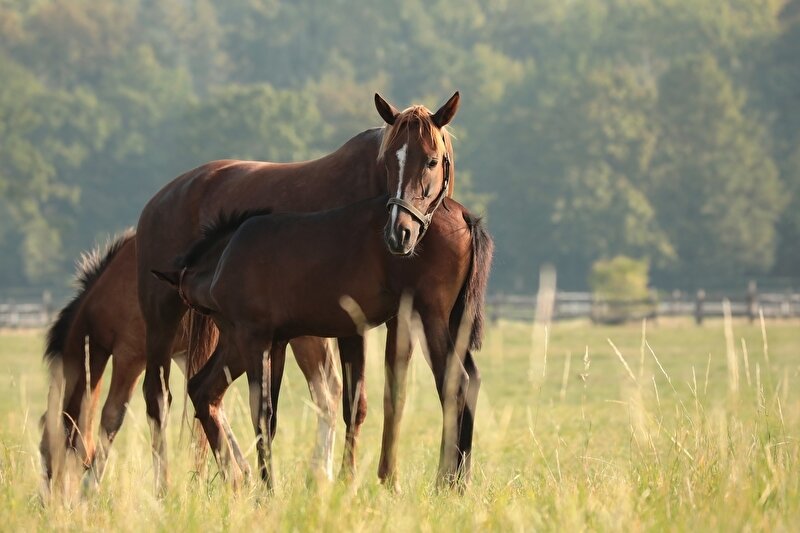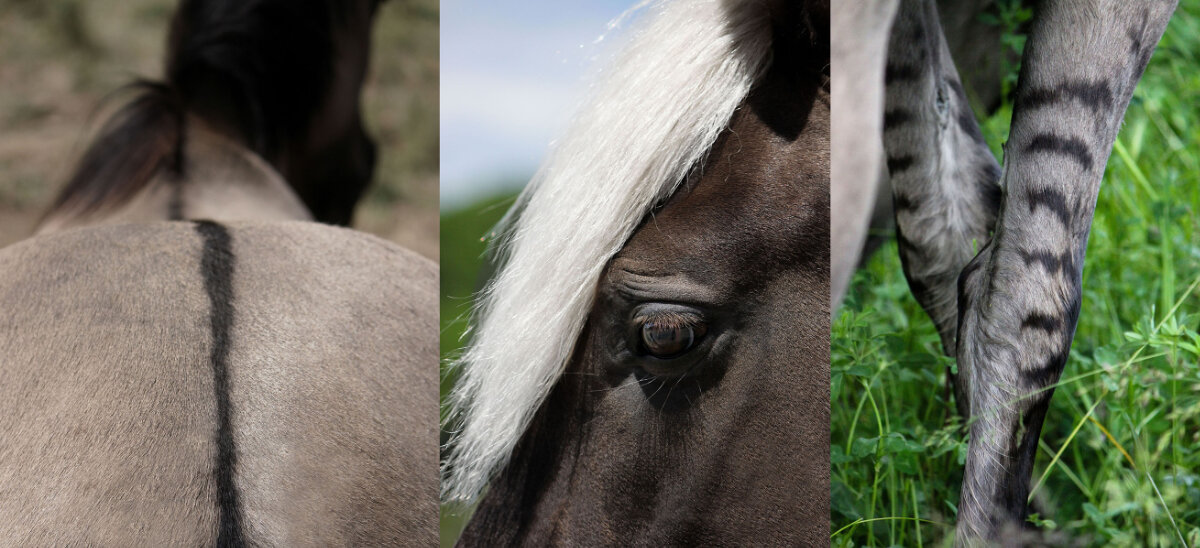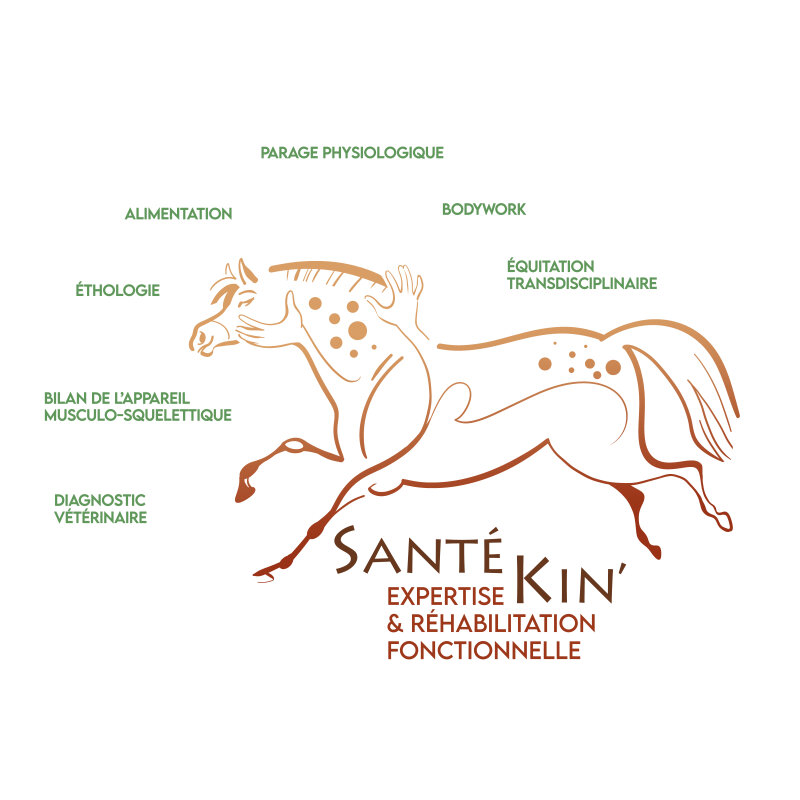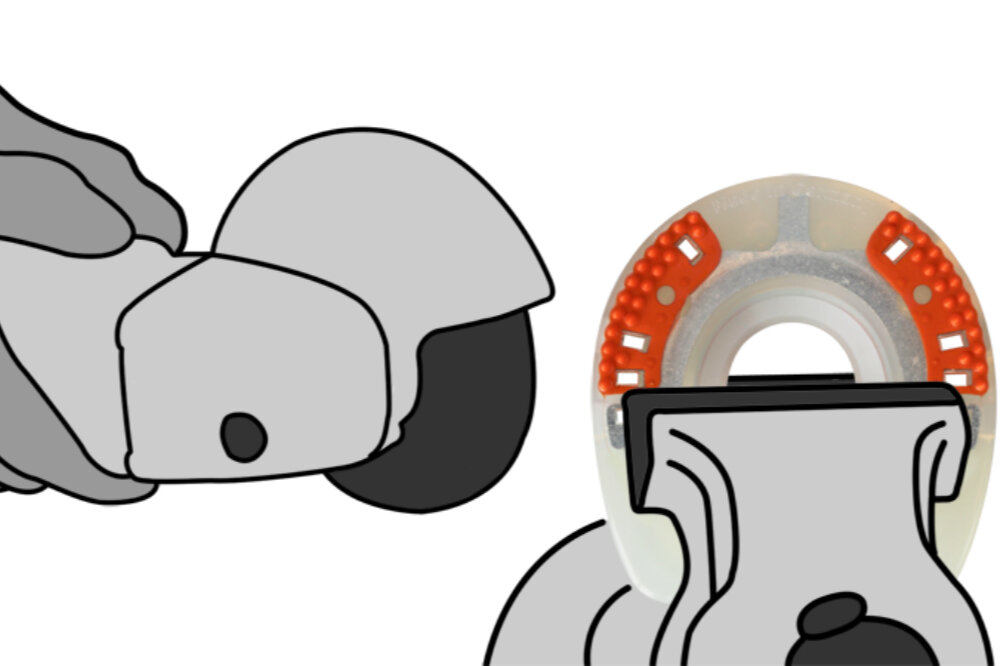Broodmares have higher nutrient requirements, both during gestation and while nursing. The right calibration of feed is important for preventing loss of condition in broodmares and to give foals a good start in life.
How does feed influence fertility?
Even before breeding activity, nutrition plays an important role in the health of a broodmare. Hormone metabolism is closely connected to other metabolic processes and nutritional intake influences ovarian function. Mares should be neither underweight nor overweight before cover. An underweight mare will be less fertile, as any reserves will be needed for its own maintenance and thus not available for potential offspring. In contrast, mares that are severely overweight often develop metabolic disorders leading to reproductive problems. Ensuring that the mare is in good condition in winter will increase the chances of a successful cover. Aim for a body condition score of between 5 and 6 by the appointed day.
Healthy equine ovarian function also apparently depends on beta-Carotene: this precursor to vitamin A, also called provitamin A, is found in young, bright green grasses. The consumption of young grass, together with longer hours of sunlight and warming temperatures, will stimulate the ovaries. In nature, this has a great advantage: fertility is thus automatically greatest in the season when the most nutrients are on offer after the cold winter months.
Whilst most hay stored from the prior year will have a low amount of beta-Carotene, forage that’s gently dried with warm air (such as Pre Alpin ® or Myo Alpin ® fibres or lucerne) is in many cases still rich in beta-Carotene in the spring and thus a suitable pre-cover supplement. Carrots are also rich in beta-Carotene.
At the same time, the mare should also receive adequate amounts of all other micro-nutrients before and during cover to increase the chance of pregnancy. In particular, an imbalance in the calcium-to-phosphorus ratio and deficiencies of selenium, iodine, vitamin A or vitamin E appear to have negative effects on fertility. Mares should therefore always be given a balanced mineral feed. Base feeds with low protein content (for example late-harvested hay) can be supplemented with the amino acids methionine and lysine.
It worked. My mare is pregnant – do I have to change her feed?
In the first two trimesters of pregnancy, the foetus develops quite slowly. No changes must be made to the mare's feeding during this time – in fact, they should be avoided in the first weeks after cover – and so the mare’s diet will not differ from that of a riding horse. This means sufficient forage (depending on breed, at least 1.5 – 2 kg hay / 100 kg body weight), concentrate feed if needed, and a mineral feed to supply all essential micro-nutrients.
There are, however, a few small things to keep in mind. The first is that the mare should neither lose nor gain a substantial amount of body fat at the beginning of pregnancy. The energy deficit resulting from weight loss can also lead to foetal resorption. If the mare gains considerable weight during gestation, the risk of equine dystocia increases. Because the mare is not yet “eating for two” in the first two trimesters, her feed should not be too rich; rather, continue to feed her as before pregnancy. The mare should ideally have a body condition score of 5 or 6. A mare that is expected to carry another foal the following year should have a BCS of 6 so that she won’t be too thin when covered again during lactation. If the mare loses weight, add more feed; if she develops too many fat deposits, make careful reductions to the feed.
The third trimester: when things speed up
After about the 200th day of gestation, the unborn foal’s development begins to accelerate. Approximately 90 percent of its body mass at birth will have developed during this period. To build tissue, the foetus needs more nutrients. The mare now needs to consume higher quantities of energy and protein so that her body does not dip into its own reserves. The unborn foal also requires more nutrients, such as calcium and phosphorus, for skeletal development.
The following table shows how requirements in the final trimester increase for a typical 600 kg warmblood mare not in additional training:
|
Daily requirement for a warmblood mare*, 600 kg body weight, not in work |
||||
|
|
Energy* in ME MJ |
PCV protein in g |
Calcium in g |
Phosphorus in g |
|
Not pregnant / until 8th month of pregnancy |
63 |
365 |
20 |
14 |
|
8th month of pregnancy |
70 |
430 |
27 |
19 |
|
9th & 10th month of pregnancy |
76 |
500 |
37 |
26 |
|
11th month of pregnancy |
90 |
670 |
60 |
43 |
Source: Gesellschaft für Ernährungsphysiologie. Empfehlungen zur Energie- und Nährstoffversorgung von Pferden. *Please note: mares of other breeds (thoroughbreds, heavy draft horses, special breeds) even of the same body weight will have different energy requirements! Our team of consultants will be glad to answer any questions concerning pregnancy and feeding.
By the end of the gestation period the energy requirement increases by half, the protein requirement nearly doubles, and the mare’s calcium and phosphorus needs triple. From the 8th month, most mares should therefore be gradually fed feeds that are higher in energy and protein, and also switched to a mineral feed that can easily cover the increased requirements.
Optimum energy and protein sources for late-trimester mares
Forage remains the more important foundation of the horse’s diet, naturally. The mare should be given ad libitum hay. The base feed can be enhanced with hay from the first cutting as well as higher-protein hay from the second cutting. The increased energy, calcium, and phosphorus requirements can often be covered by a high-quality, nutritious base feed. Poor-quality hay can be enhanced with Pre Alpin Bio Wiesencobs, Pre Alpin Wiesenflakes, or Myo Protein Flakes.
Excursus: Use caution with traditional cereal quantities
There is a long tradition of feeding several kilogrammes of grain to highly pregnant mares daily. But an excess supply of starch carries risks. First, for the mare, whose stomach is strained by excess grain feeds and whose insulin metabolism changes during pregnancy (pregnancy-related insulin resistance). But a substantial excess of blood sugar to the unborn foal via the placenta also appears to have undesirable effects: Different studies have suggested that foals of mares receiving large amounts of grain during pregnancy were more likely to develop pathological changes to bone and joint cartilage. The offspring of mares that consumed high-starch feeds were also more likely to develop insulin resistance later in life. This could be because metabolic states with high blood sugar peaks fuel inflammatory processes in the body.
It is therefore recommended that broodmares not eat more than 1 g of starch per kg of bodyweight and per meal. For a 600 kg warmblood mare, this corresponds to 1.5 kg of oats in one meal. The quantity per day should not be more than double the amount – in this case 3 kg of oats per day, divided over at least two meals. Fats are a viable option as an alternative energy source for mares. Fats that are high in omega-3 fatty acids fight against inflammatory processes and support cell membrane function. This can have positive effects on the metabolism of mares and foals.
Hay alone, however, depending on its quality and the breed of the mare, is not always enough to supply the mare with enough energy and above all enough protein. A good supplemental concentrate feed with moderate starch content and high-quality protein and fat is Haferwiese Sportmüsli. AlpenGrün Seniormüsli and AlpenGrün Mash provide good energy content and a high-quality protein and fat with very little starch. Luzernecobs contain lots of protein and calcium. Amino Pur and Bierhefe Pur are protein supplements with excellent amino acid profiles. OMEGA3 Pur has important omega-3 fatty acids and is high in energy. To meet increased micro-nutrient requirements, we also recommend feeding Seniormineral from the 8th month of pregnancy at the latest .
Right before foaling, mares usually experience loss of appetite and will eat much less. This is normal to a certain extent and no cause for worry. If the mare does not eat significantly less roughage on her own, you should step in and ration her hay. The digestive tract should not be overloaded during foaling. A word of caution about straw bedding: Particularly gluttonous mares should be put on bedding that they will not eat.
Always watch for possible signs of colic close to the foaling date. The mare’s bowel activity is especially prone to disturbance before and after giving birth. Linseed cake can help here, for example in our AlpenGrün Mash. Adequate salt intake is also important (salt block). As soon as the foal is born and if the mare shows no signs of digestive problems, she can be fed free-choice forage once again.
The foal has arrived: now all energy flows into milk production
The mare will begin to produce milk even before the birth of the foal. The first milk after birth is especially important for the foal: the colostrum, also known as beestings, is easily distinguishable from later milk. It supplies the foal with important antibodies – which it needs because its immune system is not fully developed. With regard to colostrum, there is another factor to consider before foaling in addition to feeding to meet requirements: the mare should not be moved to another stable in the last two weeks before foaling so that the foal is protected against the germs of its new environment, This is because part of the antibodies that pass to the foal through the mare’s colostrum are “stable-specific”. They protect the foal from exactly those environmental germs with which the mare had contact during that time.
After foaling, healthy mares will quickly regain their appetite. This is also important, because the mare’s requirements increase rapidly through milk production. To illustrate this, let's look again at the needs of our sample warmblood mare in comparison to her maintenance needs without a foal:
|
Daily requirement warmblood mare*, 600 kg body weight, lactating, not in work |
||||
|
|
Energy* in ME MJ |
PCV protein in g |
Calcium in g |
Phosphorus in g |
|
Maintenance requirement without foal |
63 |
365 |
20 |
14 |
|
30th day of lactation |
126 |
1000 |
62 |
43 |
|
60th day of lactation |
123 |
915 |
55 |
37 |
|
120th day of lactation |
112 |
765 |
45 |
29 |
Source: Gesellschaft für Ernährungsphysiologie. Empfehlungen zur Energie- und Nährstoffversorgung von Pferden *Please note: mares of other breeds (thoroughbreds, heavy draft horses, special breeds) even of the same body weight will have different energy requirements! Our team of consultants will be glad to answer any feed-related questions
At the end of the first month of lactation, the mare’s energy requirement is double in comparison to that for maintenance, and her protein requirement is over two and a half times as high. The calcium and phosphorus requirement tripled in the late stage of pregnancy and remain so, sinking back to previous levels only after the first month.

Well provided for in the barn and at pasture
In addition to ad libitum forage, the stabled mare now needs more concentrate feed with good protein content to meet her needs. The same concentrates are generally recommended during lactation as during late-stage pregnancy. The quantity of supplementary feed should be increased as needed, so that the mare does not lose too much condition, until the 30th day of lactation. However, a certain amount of loss of condition is normal during this time.
Mares expected to conceive in their first oestrus after foaling must not become too thin. Remember, a BCS of 5 or less reduces the chance of a repeat pregnancy. An overweight mare, however, can be put on a careful weight-loss diet after foaling; do not feed too little and always include a protein supplement so that the mare loses mainly fat and not muscle.
As soon as the weather permits turnout, young pasture grass is also a good source of energy and protein. With proper pasture maintenance (link to article Pasture Maintenance), grazing on sufficiently large areas with good vegetation can even provide the lion's share of the mare’s daily diet. This will allow you to cut down on concentrates, or even cut them out altogether, depending on breed.
At the same time, keeping the mare and foal near other broodmares and foals is also ideal for the foal’s development. However, the mare will still need daily mineral supplements to cover her requirements, even at pasture. We do not recommend mineral licks due to uncontrolled ingestion. A pure salt lick should be accessible for the mare but not for the foal.
In the first two months of life, the foal gets all the nutrients it needs exclusively from its mother’s milk. After that, it will begin to eat solid food in a playful way. By observing and eating alongside its mother, it learns what is edible and what is not. From the third month you can slowly begin introducing the nursing foal to appropriate quantities of concentrate feed and mineral feed. Nutritionally speaking, this ensures the foal a good start in life and paves the way for its development into a healthy and strong future riding horse.
Agrobs products for successful breeding:
- Haferwiese Sportmüsli: Energy source with high-quality protein and fats and moderate starch content
- AlpenGrün SeniorMüsli: Cereal-free concentrate feed with high-quality protein and fat sources
- AlpenGrün Mash: Cereal-free mash with linseed cake for healthy digestion, high-quality supply of protein and fatty acids
- Luzernecobs: Protein and calcium source based on crude fibre
- Amino Pur and Bierhefe Pur: Protein feeds with important amino acids
- OMEGA3 Pur: Concentrated energy source with important omega-3 fatty acids
- Seniormineral: Mineral feed for optimum mineral supply in increased need situations
- Pre Alpin Bio Wiesencobs and Pre Alpin Wiesenflakes: Wholesome forage supplement to enhance poor-quality base feeds.
January 2022, © Agrobs GmbH
Sources:
- Coenen, M.; Vervuert I.: Pferdefütterung. Georg Thieme Verlag KG, Stuttgart, 2020
- Gesellschaft für Ernährungsphysiologie. Empfehlungen zur Energie- und Nährstoffversorgung von Pferden. DLG Verlag, 2014
- Robles, M., Hammer, C., Staniar, B., & Chavatte-Palmer, P. (2021). Nutrition of Broodmares. Veterinary Clinics of North America: Equine Practice, 37(1), 177–205. doi:10.1016/j.cveq.2021.01.001

 German
German French
French

-for-horses.jpg)


